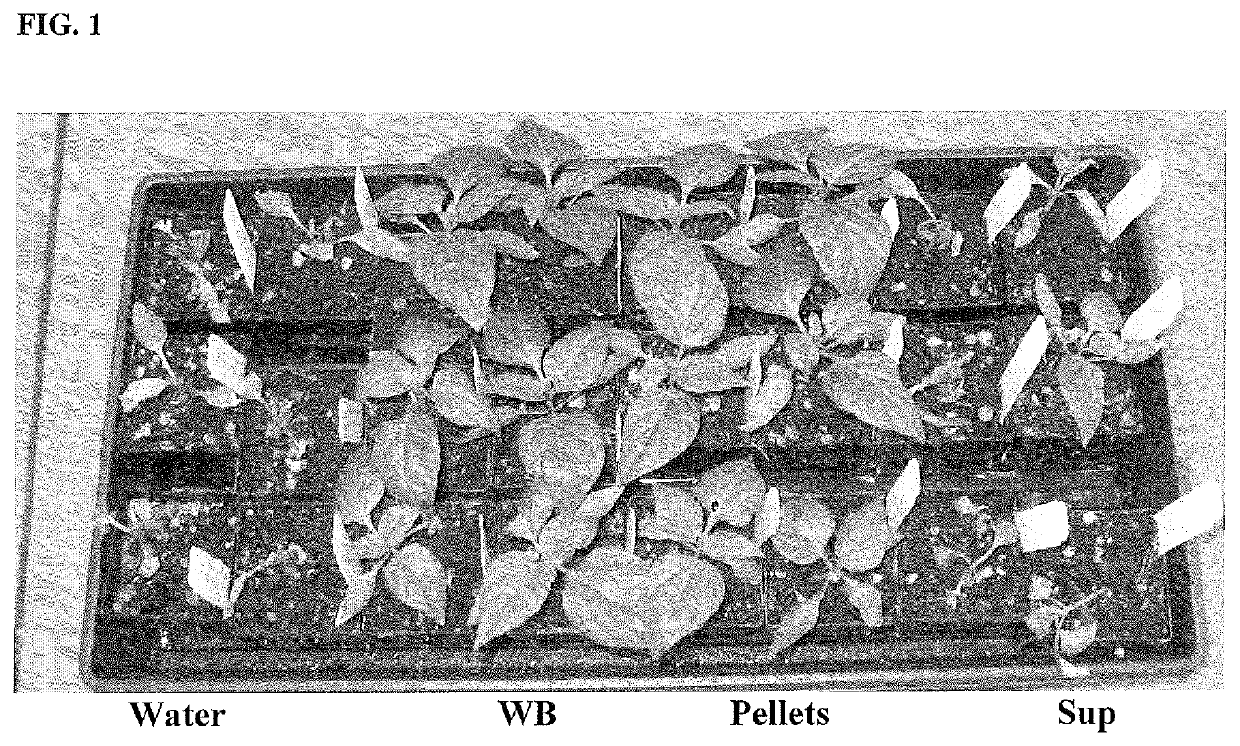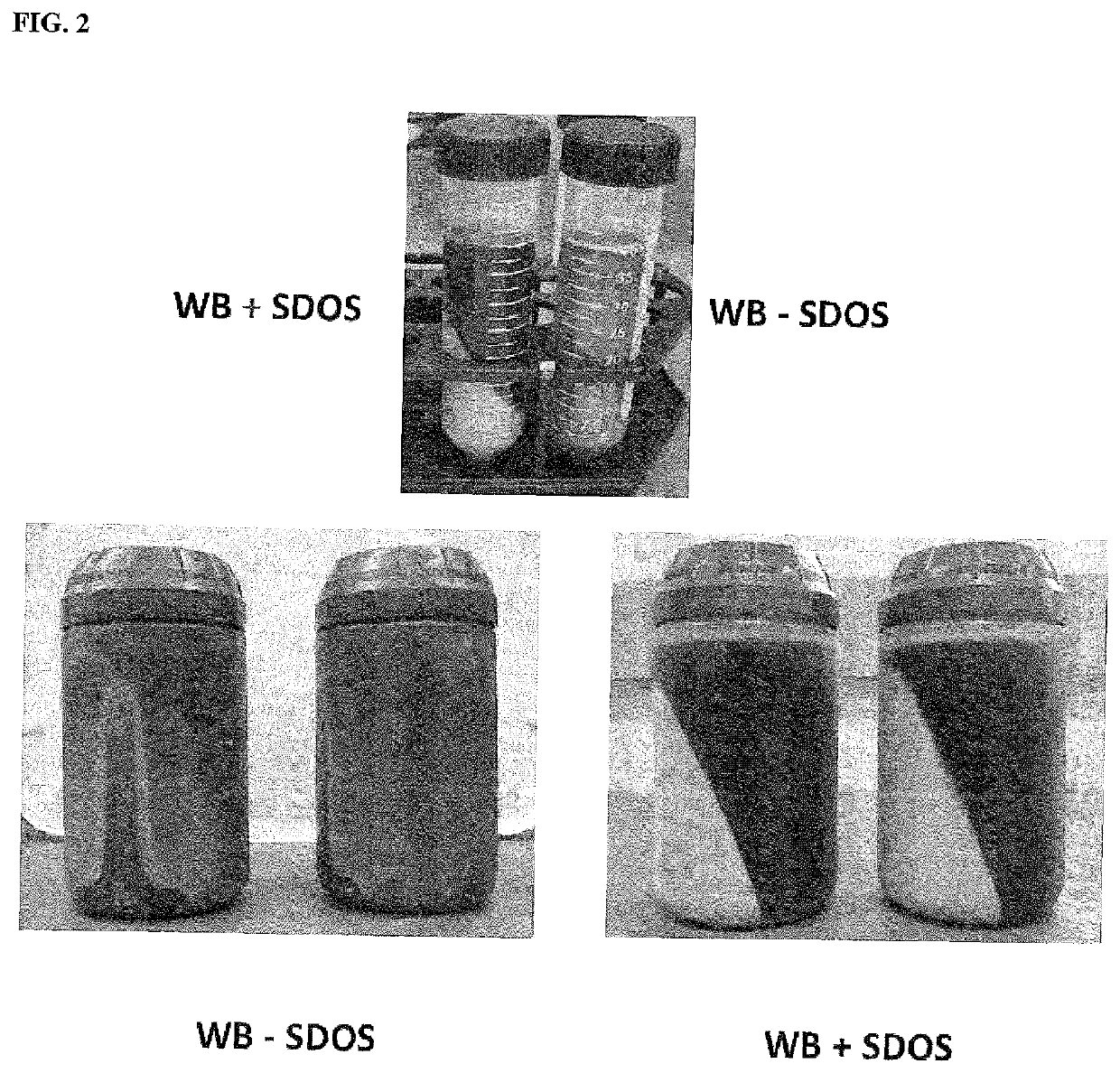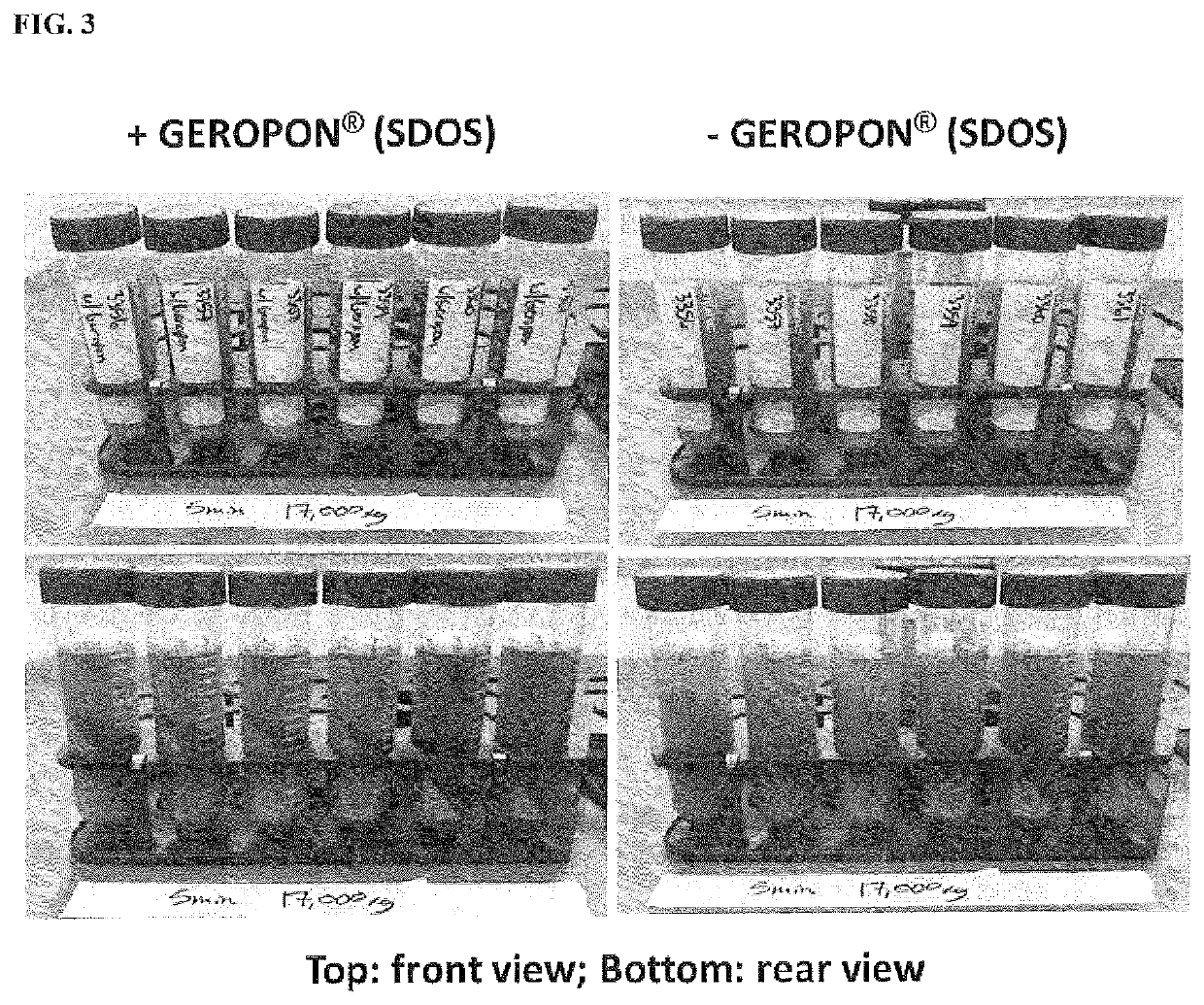Method of purifying antifungal compounds and exopolysaccharides from a microbial cell culture
a cell culture and antifungal technology, applied in the field of purification of antifungal compounds and exopolysaccharides from microbial cell cultures, can solve the problems of toxic and non-biodegradable, foodborne diseases and fungal infections of both humans and animals, and crop yield reduction
- Summary
- Abstract
- Description
- Claims
- Application Information
AI Technical Summary
Benefits of technology
Problems solved by technology
Method used
Image
Examples
example 4
ion that SDOS Induces Formation of a Compact Pellet Fraction and Measurement of Fusaricidin a in Pellet and Supernatant Fractions
[0088]GEROPON® (SDOS) is a commercial product available from Solvay (Brussels, Belgium). To confirm that the SDOS in the GEROPON® was responsible for the centrifugation effect and not another chemical component in the commercial product, a purified preparation of SDOS was purchased from Sigma-Aldrich (St. Louis, Mo.). The experiment described in Example 2 was repeated with GEROPON® (SDOS) added to the whole broth to a final concentration of 0.1% or the purified SDOS added to final concentrations of 0.1% or 0.5%. Compact pellet fractions were produced with either the GEROPON® (SDOS) or the purified SDOS.
[0089]The analytical method described in Example 1 was then used to determine the relative levels of fusaricidin A in the whole broth and the pellet and supernatant fractions containing GEROPON® (SDOS) or the purified SDOS. Equivalent volumes of the whole br...
example 6
pH and Salt Concentration on Pellet Formation and Fusaricidin A Levels
[0096]Antifungal compounds such as fusaricidin A often carry ionizable groups that are influenced by the pH of the solution in which they are dissolved. The electric charge of these ionizable groups impacts how the antifungal compounds interact with other compounds in the solution. To identify pH's that improve the ability of GEROPON® (SDOS) to induce formation of aggregates in the Paenibacillus sp. NRRL B-50972 whole broth the pH of the whole broth was adjusted between 3 and 10 by adding hydrochloric acid and sodium hydroxide prior to centrifugation.
[0097]Observation of the pellet fractions after low speed centrifugation with whole broth containing GEROPON® (SDOS) at pH 3, 6, or 10 demonstrated that a compact pellet fraction with a clear supernatant was produced at pH 6 (see FIG. 6). This experiment was repeated with Paenibacillus sp. NRRL B-50972 whole broth containing GEROPON® (SDOS) adjusted to a pH of 3, 4, 5...
example 9
Suspensibility of Pellet Fraction after Addition of Releasing Aid
[0106]The physical properties of the pellet fraction with the GEROPON® (SDOS) alone or with both the GEROPON® (SDOS) and C12EO25 were investigated. One of the physical properties investigated was the suspensibility of the concentrated pellet fraction.
[0107]Paenibacillus sp. NRRL B-50972 was cultured in a soy-based medium and subjected to low-speed centrifugation with GEROPON® (SDOS) to produce a pellet fraction. The pellet fraction was separated into two fractions and C12EO25 was mixed with one of the fractions. Aliquots from both fractions were mixed with water in 15 mL conical vials to make 10-fold dilutions. The diluted pellet fractions were allowed to equilibrate at room temperature for several minutes.
[0108]After equilibration, the pellet fraction without C12EO25 separated into two layers with a transparent layer on top and a cloudy layer on the bottom (see the conical vial on the left in FIG. 10). In contrast, th...
PUM
| Property | Measurement | Unit |
|---|---|---|
| pH | aaaaa | aaaaa |
| pH | aaaaa | aaaaa |
| pH | aaaaa | aaaaa |
Abstract
Description
Claims
Application Information
 Login to View More
Login to View More - R&D
- Intellectual Property
- Life Sciences
- Materials
- Tech Scout
- Unparalleled Data Quality
- Higher Quality Content
- 60% Fewer Hallucinations
Browse by: Latest US Patents, China's latest patents, Technical Efficacy Thesaurus, Application Domain, Technology Topic, Popular Technical Reports.
© 2025 PatSnap. All rights reserved.Legal|Privacy policy|Modern Slavery Act Transparency Statement|Sitemap|About US| Contact US: help@patsnap.com



